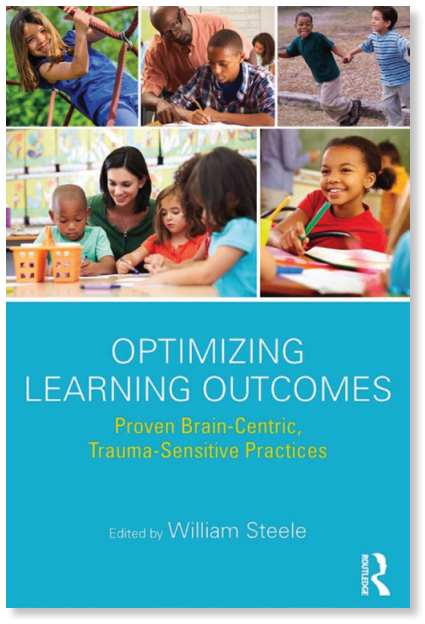Chapter Three
Multi-Sensory Movement for All:
Changing Our Physiology, Behavior and Performance
by Roberta Scherf and Chris Bye
We’re pleased to announce the publication of a new book on trauma-informed care, edited by William Steele,
Ph.D. The book includes a chapter on CalmConnect™ efficacy, released in 2017 by Routledge.

Abstracts:
Book:
There is no doubt that movement can help all
students with regulation in ways that allow them to
focus and engage those cognitive processes needed
to learn. When movement patterns are integrated
with rhythmic music, comforting vocal frequencies,
visual patterns, and synchronized with the expressive
features of emotion and the movement of others,
teachers and students realize so many more benefits.
This chapter describes the integrated processes of
the CalmConnect™ program used in classrooms and
other settings throughout the country. Teachers,
parents, occupational therapists, and school social
workers describe their experiences with students
before and after using the three to four-minute
segments in the classroom; how it improves focus,
reduces off-task behaviors, helps to regulate behavior
and overall learning outcomes for all students.
Text Book:
Readers will be able to identify and then
discuss how the various components of specific
movement patterns, rhythmic music, comforting
vocal frequencies, visual patterns synchronized
with the expressive features of emotion and the
movement of others supports bio-physiological and
neurological functions critical to learning and the
regulation of reactions and behaviors associated with
anxious and traumatized students, as well as those
students experiencing stress and sensory processing
challenges. Links to several video segments allow
the reader to hear directly from teachers and parents
about the various ways that the CalmConnect™
program has integrated these components into three
to four-minute segments for use in classrooms and
other settings, and how their students and children
are better able to focus, reduce off-task behaviors and
realize improved learning and behavioral outcomes.